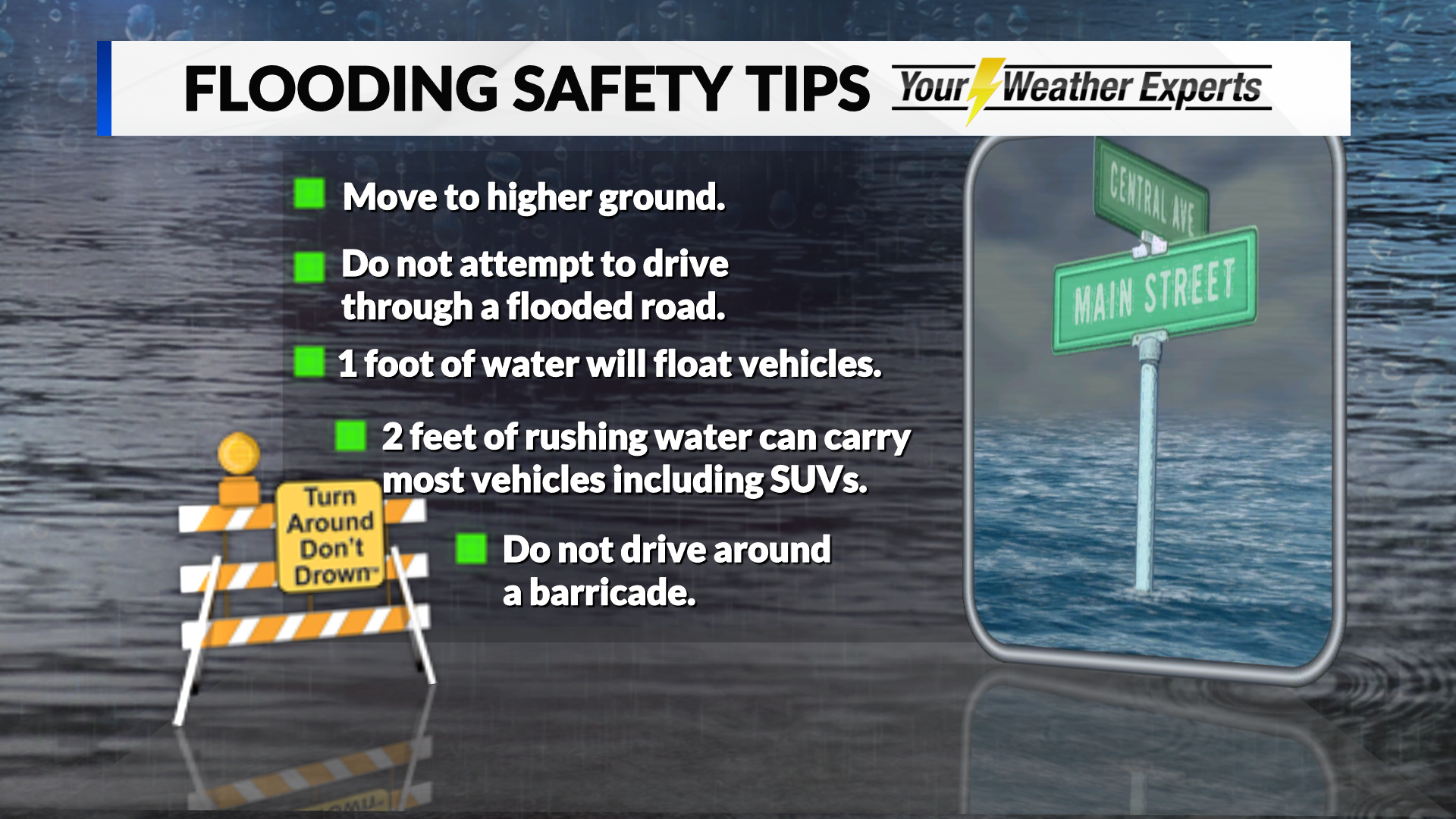How To Prepare For Floods During Severe Weather Awareness Week (Day 5)

Table of Contents
Assessing Your Flood Risk
Understanding your risk is the first step towards effective flood preparedness. This involves evaluating your location and identifying potential hazards on your property.
Understanding Your Location
Determining your flood risk begins with understanding your location's vulnerability. Many factors contribute to flood risk, and it's crucial to consider them all.
- Check FEMA flood maps: The Federal Emergency Management Agency (FEMA) provides detailed flood maps for the United States. Use their online service to check your specific address and determine your flood risk zone. Knowing your zone will help you understand your level of risk and inform your preparedness strategy.
- Research historical flood data for your area: Look into your local area's history of flooding. Local government websites or historical societies often have records of past flood events, indicating areas prone to inundation. This historical data provides valuable insight into potential flood pathways and magnitudes.
- Consider the topography of your property: Observe the elevation of your property relative to surrounding areas. Low-lying areas, near rivers, streams, or bodies of water, are at higher risk of flooding. Understanding the landscape is critical for determining escape routes and potential areas of water accumulation.
Identifying Potential Hazards
Once you understand your location's vulnerability, identify potential hazards on your property that could exacerbate the impact of a flood.
- Map out escape routes: Plan several escape routes from your home, considering different potential flood levels. These routes should lead to higher ground or designated safe zones. Ensure everyone in your household knows these routes.
- Identify safe areas within your home and neighborhood: Determine areas within your home that are least likely to be affected by floodwaters. Identify safe locations in your neighborhood, such as higher ground or designated shelters.
- Note potential hazards like downed power lines: Flooding can cause power lines to fall, creating a significant electrocution hazard. Identifying and avoiding these hazards is critical during and after a flood.
Creating a Flood Preparedness Plan
A comprehensive flood preparedness plan is crucial for minimizing risk and ensuring your family's safety. This involves developing an evacuation plan and assembling an emergency kit.
Developing an Evacuation Plan
A detailed evacuation plan should be practiced regularly to ensure everyone knows what to do in case of a flood.
- Establish primary and secondary evacuation routes: Having multiple routes ensures you have options if one becomes impassable due to flooding. These routes should be clearly marked and communicated to all household members.
- Designate a meeting place outside the flood zone: Choose a meeting point that's easily accessible and outside the potential flood area. This ensures family members can regroup if separated during the evacuation.
- Practice your plan regularly: Conduct regular drills to familiarize your family with the plan. This will help ensure a smooth and efficient evacuation in a real emergency.
Assembling an Emergency Kit
Your emergency kit should contain essential supplies to sustain your family for several days after a flood.
- Include at least one gallon of water per person per day: Water is essential for survival, especially after a flood when clean water sources might be compromised.
- Pack enough food for several days: Choose non-perishable food items that are easy to prepare and store.
- Keep copies of important documents in a waterproof bag: This includes insurance policies, identification cards, medical records, and other vital documents.
Protecting Your Home and Property
Taking proactive steps to protect your home and property can significantly reduce the damage caused by a flood.
Floodproofing Your Home
Several measures can help protect your home from flood damage.
- Install check valves to prevent sewage backup: Check valves prevent sewage from backing up into your home during a flood.
- Elevate valuable items and appliances: Raise valuable items and appliances off the floor to prevent water damage.
- Use sandbags to protect vulnerable areas: Sandbags can help create barriers to keep floodwaters out of your home.
Purchasing Flood Insurance
Flood insurance is crucial, even if you're not in a high-risk area. Many homeowners' insurance policies don't cover flood damage.
- Contact your insurance provider to explore options: Discuss your flood risk with your insurance provider and explore the available flood insurance options.
- Understand the coverage limits and deductibles: Carefully review the policy details to understand the coverage limits and any applicable deductibles.
- Consider purchasing supplemental flood insurance: You may need supplemental insurance to cover the full replacement cost of your belongings.
Conclusion
Proper flood preparedness is essential for protecting your family and property. By assessing your risk, creating a comprehensive plan, and taking proactive steps to protect your home, you can significantly reduce the impact of flooding. Remember, flood safety starts with knowledge and preparation. Take action today to ensure your flood preparedness is up to par. Don't wait for a flood to strike – prepare for it now. Learn more about flood preparedness and flood safety measures on the official website of [Insert relevant resource link here].

Featured Posts
-
 Exploring Jenson And The Fw 22 Extended Features And Innovations
May 26, 2025
Exploring Jenson And The Fw 22 Extended Features And Innovations
May 26, 2025 -
 F1 Monaco Gp Fp 1 Results Leclercs Pace Sets The Standard
May 26, 2025
F1 Monaco Gp Fp 1 Results Leclercs Pace Sets The Standard
May 26, 2025 -
 Emmy Winners Daughter Spotted With Gerard Butler
May 26, 2025
Emmy Winners Daughter Spotted With Gerard Butler
May 26, 2025 -
 The Plight Of Idf Soldiers Held In Gaza Their Stories Of Heroism
May 26, 2025
The Plight Of Idf Soldiers Held In Gaza Their Stories Of Heroism
May 26, 2025 -
 Luksuzni Zivot Srpskih Penzionera Prica O Bogatstvu I Vilama
May 26, 2025
Luksuzni Zivot Srpskih Penzionera Prica O Bogatstvu I Vilama
May 26, 2025
Latest Posts
-
 Odigos Tiletheasis Gia To Savvato 5 4
May 30, 2025
Odigos Tiletheasis Gia To Savvato 5 4
May 30, 2025 -
 Programma Tileoptikon Metadoseon Savvatoy 12 4
May 30, 2025
Programma Tileoptikon Metadoseon Savvatoy 12 4
May 30, 2025 -
 Koryfaies Ekpompes Savvatoy 5 Aprilioy
May 30, 2025
Koryfaies Ekpompes Savvatoy 5 Aprilioy
May 30, 2025 -
 Oi Kalyteres Tileoptikes Metadoseis Savvatoy 5 4
May 30, 2025
Oi Kalyteres Tileoptikes Metadoseis Savvatoy 5 4
May 30, 2025 -
 Tileoptiko Programma Savvatoy 5 Aprilioy
May 30, 2025
Tileoptiko Programma Savvatoy 5 Aprilioy
May 30, 2025
